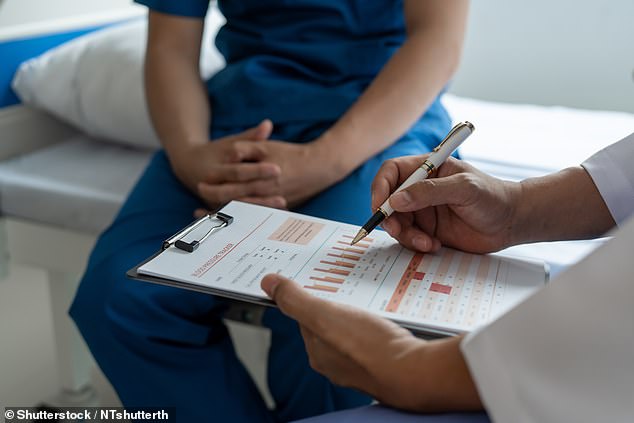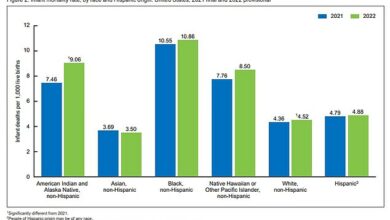The easily overlooked signs of prostate cancer should NEVER be ignored as Olympic hero Sir Chris Hoy reveals terminal diagnosis




British cycling legend Sir Chris Hoy has revealed he has incurable prostate cancer and has ‘two to four years to live’ – at just 48 years old.
The 11-time Olympic medalist said in February he was undergoing treatment for cancer, but did not say which form of the disease he had.
Fans were shocked today when he admitted his grim prognosis due to the fact the cancer had spread.
Although prostate cancer is typically diagnosed in men aged 70 and over, there has been a dramatic increase in the disease in patients under 50 since the early 1990s.
It’s not entirely clear why – as most prostate cancer is not clearly linked to lifestyle factors such as obesity, like other cancers – but there are signs that men of all ages should be aware of.

British cycling legend Sir Chris Hoy has revealed at the age of 48 that he has incurable prostate cancer and may have two to four years to live.

Fans were shocked when Sir Chris admitted his grim prognosis due to the fact the cancer had spread
Mystery about the causes of prostate cancer at a young age
There are around 55,000 new cases of prostate cancer in Britain every year and the highest rate occurs in men aged 70 to 74.
It is the most common form of cancer in men and more than 12,000 people die from the disease every year.
Since 1990, the number of diagnoses has increased by more than 50 percent overall, but the largest increase has been among younger men.
Prostate cancer diagnosed before age 55 is sometimes called “young onset.”
Doctors are unsure why Britain’s changing demographics – black men have double the risk of prostate cancer compared to other ethnicities – might play a role.
Black men who have an immediate family member, such as a father or brother with prostate cancer, are four times as likely.
The increase may also be due to better awareness, testing and diagnosis.
While there is some evidence that factors such as obesity, lack of physical activity and exposure to infections may increase the risk, more research is needed.
How early-onset prostate cancer is different
Sir Chris Hoy, 48, first discovered he had cancer last year and announced in February he was undergoing chemotherapy.
In April, he said the 18-week treatment was almost over and that he was “excited to get it over with.”
But it seems the treatment was unsuccessful. Now Sir Chris has revealed that he, sadly… would only have two years to live.
Prostate cancer is very treatable if caught early. Overall, nine in ten men with the disease will survive for five years or more, and eight in ten will survive for ten years.
The outlook is much poorer for advanced prostate cancer, with survival falling to one to three years.
Prostate cancer is more likely to be diagnosed at this stage in younger men – as was the case with Sir Chris – leading experts to believe it is a more aggressive type.
The easy to ignore symptoms that no man should ignore
Because prostate cancer, like other cancers, is best treated at an earlier stage, experts say all adult men should be aware of changes that could be a sign of the disease.
The prostate is a gland the size of a walnut, located just below the bladder in men. It plays a crucial role in sperm production and ejaculation.
Due to its location, it usually causes urinary tract symptoms. If a man notices these, it is important to speak to a GP and discuss whether a so-called PSA test may be warranted.
PSA stands for prostate-specific antigen, a hormone that is produced in larger quantities by the prostate when there is a problem with the gland.
One of the most common signs that something is wrong with the prostate is a change in the frequency of urination.
While the amount people urinate can vary widely — anything between four and 10 times can be considered normal — it’s a noticeable increase that experts say men should keep in mind.
Sudden urges – the need to run to the toilet – can also be a sign of a problem.
This may be associated with difficulty initiating urination, medically known as hesitancy.
Effort or taking a long time to empty the bladder, weaker than normal flow and the feeling that the bladder has not been completely emptied are also symptoms.
Blood in the urine or semen should also be checked by a doctor immediately.
These symptoms generally do not mean that a man has prostate cancer; more often than not it can simply be a sign of benign prostate problems that affect more than half of men.
However, they should be examined by a GP and if no cause can be found, a referral to an experienced urologist should be made.
Signs of possible metastatic cancer include bone and back pain, loss of appetite and unexpected weight loss, fatigue, and pain in the testicles.
Sir Chris was first diagnosed after visiting the doctor with pain in his shoulder. Scans later revealed that this was caused by a tumor that had spread from the prostate.
Although advanced prostate cancer can cause urinary symptoms, this is not always the case.
What to do if you are concerned
The NHS states that any man over the age of 50, regardless of symptoms, can request a PSA test from their GP.
A PSA test alone cannot diagnose prostate cancer – sexual activity, vigorous exercise, certain medications, urinary tract infections, and benign prostate enlargement, all of which are very common, can raise PSA.
However, in combination with symptoms, this may warrant an examination of the prostate and possibly further investigation.
For more information about prostate health, visit Prostate cancer UK.
If a younger man has any of the previously mentioned symptoms, a PSA test and a prostate exam may be worthwhile.

The NHS states that any man over the age of 50, regardless of symptoms, can request a PSA test from their GP
Liverpool-based prostate surgeon Marc Lucky said: ‘Any man concerned about his prostate from the age of 45 should have a PSA test.
‘It is important to discuss changes in urinary patterns with the doctor, as well as any other reasons for concern.’
PSA tests are also available from private doctors and home tests are available from pharmacists, costing from just £30.
‘If a younger man develops an abnormal result, a referral to an experienced urologist may be warranted, who can perform an examination and other tests,’ adds Mr Lucky.




